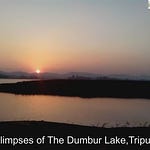Promote yourself or your organisation by sponsoring this newsletter — we reach an engaged audience with a 30–40% weekly open rate. Leave a message or contact me directly at mrinmoy@majumdar.info.
Upgrade to a paid membership and unlock exclusive insights and benefits. Click here. (Click here to pay in USD)
Subscribe to the “I Tell Differently” Podcast on YouTube and stay connected with the latest updates of the I Tell Differently Newsletter. Click here.
Contribute as a Guest Author of this newsletter. Publish your article in the I Tell Differently Newsletter
Nearly fifteen years ago, in the heart of West Bengal’s Midnapore district, lies Chandra Forest, a place known among villagers both for its towering sal trees and the dangers that lurk within it. It was here that a project was set in motion to measure how much carbon the forest was quietly absorbing from the air—a scientific endeavor cloaked in the mystery of the wild.
I was not meant to be part of the core team. My presence happened only by chance, as I had to step in for the lead investigator who arranged everything but could not stay the night. Four of us began our journey from Kolkata at dawn, driving deeper and deeper into the countryside until the roads narrowed into tracks shadowed by thick canopy.
The camp was set near a tall sal tree, selected for the experiment. Our task was simple yet vital: cover the tree with a special tent, insert probes into its trunk, place another just outside the forest edge, and measure the difference in carbon dioxide levels inside and out. If the readings fell as expected, we would know how much carbon the tree consumed—a fraction of the forest’s greater contribution to the earth’s balance.
The tent was massive and waterproof, designed to withstand sun, storm, and time. By the dimming afternoon we had our shelter ready, our instruments in place, and our modest sleeping area prepared. The lead investigator, satisfied with everything, left for Kolkata, entrusting the responsibility to us.
Two villagers, rugged and silent, stayed with us through the evening. They helped with our cooking and carried hot food from their home to our forest camp. But as night descended and our dinner was done, they prepared to leave. Before stepping back onto the narrow trail, they offered us a quiet but chilling warning.
This jungle and its adjoining ranges were more than trees and shadows. They were the pathways of elephants—great herds that descended from the highlands of Bankura and Midnapore, especially after Durga Puja, to feast on newly harvested fields. The villagers spoke in hushed tones of how a herd rarely troubled anyone beyond stealing crops, but when a lone tusker appeared—a massive elephant with a single curved ivory blade—the story was different. A tusker, they said, carried danger in its stride, charging without warning and leaving destruction in its wake.
Snakes, too, made their presence known in this forest. Black, swift, and silent, they were another reason the villagers refused to stay after nightfall. “We can help you till dusk,” they said firmly. “But once darkness comes, you must face Chandra on your own.”
With that, they melted into the night, leaving only the rain and the restless sounds of the forest around us. Our lanterns glowed feebly against the blackness, shadows swaying on the canvas walls of our tent. From the canopy above came the pattering of droplets, sometimes soft, sometimes fierce, as if the sky itself could not decide whether to soothe or to warn.
As we lay in our beds, listening in silence, the atmosphere thickened with unease. Every rustle felt magnified; every creak of branch or flutter of wings seemed unnatural in its closeness. The forest was alive, whispering in tongues we could not understand.
Then it came—the hiss. A sound sharp, low, and menacing. Not the sizzle of rain, not the hum of insects. It slithered across the silence with purpose. All of us froze, our breaths caught, our eyes scanning the dim glow of the camp. The hiss lingered, stretched, then faded into the night.
In that instant, we understood the villagers’ fears. Science had brought us into Chandra Forest, but something older, wilder, and more powerful ruled it. And as the night pressed on with its chorus of rain and strange noises, we lay awake, humbled and alert—an insignificant presence in the vast kingdom of the wild.
If you liked today’s story, then :
You can find me on Instagram / YouTube / Listly / Tumblr
This newsletter may receive affiliate commissions from some of the links given above/below. After deducting the honorariums, maintenance, and taxes for running this site, all the commissions will be deposited into NGOs and NPOs.
itelldifferently is a reader-supported publication. To receive new posts and support my work, consider becoming a free or paid subscriber.
You may also like :
I Tell : My Life My Style YouTube Channel
Five All-Time Adventure Classics(Pay in USD)
Make your own WordPress membership site(AD)
This one is for urban Kishan(AD)
50 Business Ideas to open Start Ups in Sustainable Engineering(Pay in INR)
Balcony Grown Rain Lilly Plant (10 bulbs)
GEVI Household V2.0 Countertop Nugget Ice Maker Machine for Home IMNA0










